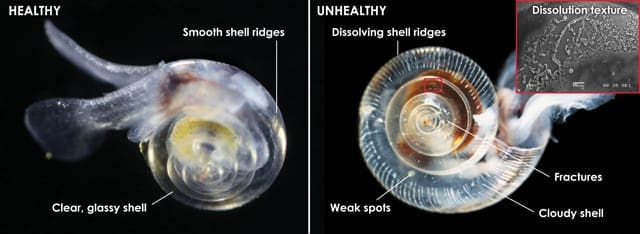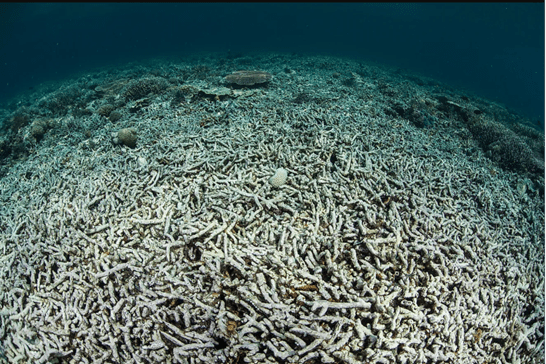Impacts of Climate Change on the Ocean
The ocean has softened the blows of global warming, but it’s come at great cost
Covering 70 percent of the planet’s surface, the ocean influences weather and climate by absorbing solar radiation and distributing that heat and associated moisture throughout the ocean and around the globe. Humanity benefits from countless services that the ocean provides as the driver of global weather systems.
The ocean has also buffered humans and other terrestrial organisms from the worst effects of climate disruption by directly absorbing more than 25 percent of all anthropogenic carbon dioxide pollution and more than 90 percent of the excess heat trapped in the biosphere by said pollution.
Unfortunately, these buffering functions have come at a high cost, disrupting the ocean in three dangerous interconnected ways: heating, deoxygenation, and acidification.
- Excess ocean heat is degrading critical ocean ecosystems and causing flooding in vulnerable communities
- Increasing ocean acidification is harming marine species, from plankton to fisheries
- Expanding deoxygenated ocean regions are suffocating marine life
The Cascading Consequences of Marine Heat
The excess heat absorbed by the ocean is staggering. Ocean heat uptake in 2023 was enough to power society for more than 25 years. Average global sea surface temperatures have increased by about 1ºC since the middle of the 20th century—a deceptively small change that is spurring a host of negative cascading effects. Ocean circulation patterns that transport nutrient-rich waters around the globe are altered, weather patterns are disrupted, and storms are intensified. Warmer waters are also causing sea levels to rise, through both ice sheet melt and because warm water expands, posing monumental threats to coastal ecosystems and communities. Additionally, warming seas have caused stronger and more frequent marine heatwaves, turning coral reefs from biodiverse nurseries to graveyards and forcing many marine species to shift their ranges poleward, out of the reach of dependent communities.


As the Ocean Heats, Life Runs Out of Oxygen
As surface waters warm, they become more buoyant, limiting the deep mixing that replenishes oxygen across the ocean and leaving vast regions increasingly starved of it. Oxygen is also more soluble in cooler water, so warming ocean regions cannot store as much oxygen. This redistribution and reduction of oxygen favors microbes over larger marine species, including fish, and destabilizes global marine food webs in ways that pose significant threats to food security, public health, and wellbeing.
Ocean Acidification is Harming the Foundations of Marine Food Web
More than a quarter of the excess carbon dioxide produced by humans has been absorbed by the ocean. In turn, this has resulted in a 30 percent increase in ocean acidity. Ocean acidification has far-reaching implications for marine life. It reduces the amount of carbonate, a key building block in seawater, making it difficult for marine organisms that are foundational to ecosystems, such as corals and some plankton, to form their shells and skeletons. As these organisms struggle to survive, entire ecosystems and the fisheries that depend on them face collapse.


Ocean-Climate Changes are Harming Life as We Know It
The combination of ocean warming, deoxygenation, and acidification is pushing marine biodiversity to their limits. If marine life cannot adapt in time to the changing ocean, they will suffer and go extinct, weakening ecosystems further and destabilizing food and economic security for hundreds of millions of people. The current conditions challenge whether existing strategies are sufficient and where additional efforts are needed to support adaptation and resilience.
LEARN MORE
Discover Ocean Visions’ four-part strategy to directly address the causes and impacts of climate disruption.